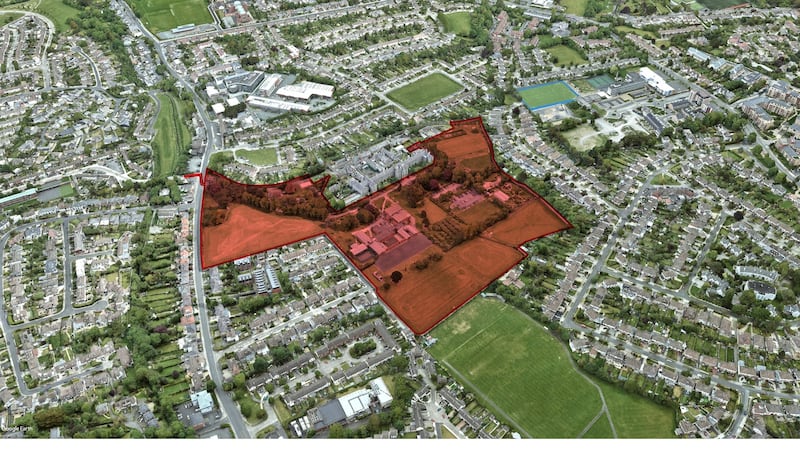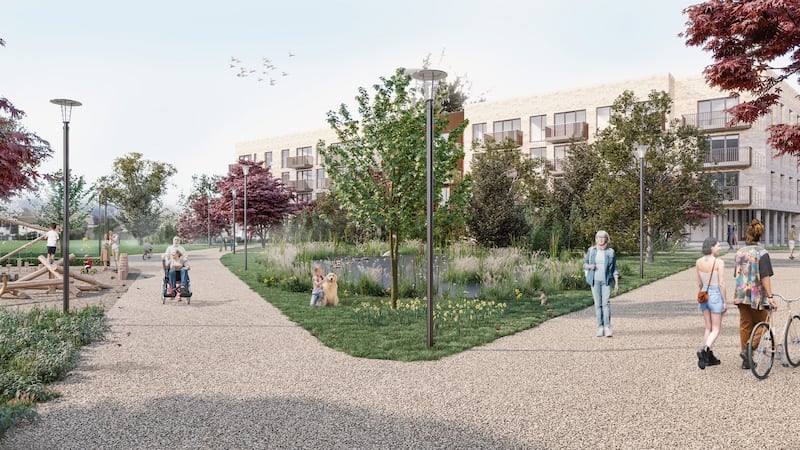Plans for almost 1,000 social and affordable homes at the Central Mental Hospital in Dundrum, south Dublin, have been lodged with An Bord Pleanála by the Land Development Agency (LDA).
The estate of 940 apartments, 17 duplexes and 20 houses on the almost 10 hectare site will be the largest Dublin project undertaken by the agency from its initial portfolio of State lands.
However, the scheme lodged with the board on Wednesday, represents a substantial reduction on the agency’s previous plans for the site in terms of both height and apartment numbers.
The LDA had initially planned a 14 storey apartment block at the centre of the site. When it published its masterplan for the development last year it had already reduced heights to a maximum of 11 storeys, following resistance from local residents. However the final scheme represents a halving of the original height with buildings now ranging from two to seven storeys.
The masterplan had also proposed the construction of 1,259 houses and apartments on the site. The reduction to 977 homes in this application also follows extensive four-stage consultation process, which included 25 meetings with local communities and politicians, the LDA said.

"We have taken a proactive approach to engage with the local community, politicians and our partners in Dún Laoghaire Rathdown County Council, LDA chief executive John Coleman said. The feedback was "extensive and constructive" he said.
“We have looked to balance the need to optimise use of this landmark state-owned site to deliver much needed housing with the desire to integrate into an existing neighbourhood,” he said.
“By delivering affordable homes at scale, the LDA will contribute vital housing supply that will help to give a fair deal to the many thousands of people who are struggling in the private market, but don’t qualify for social housing.”
Housing mix
Of the 977 homes, 80 per cent will be available to low and middle income workers as “affordable” housing, either for sale through the State-subsidised affordable purchase scheme, or as cost-rental, where rents are based on the cost of building and maintaining the development, rather than market rates. The remaining 20 per cent will be used for social housing.
Almost 85 per cent of the homes will be one-bed, two-bed or studio apartments. One-beds will account for the largest proportion at 423 apartments, with 354 two-beds, 53 studios, as well as 110 three-bed apartments.

The development, which is less than 500m from the Windy Arbour Luas stop and 800m north of Dundrum Town Centre, will include facilities for residents and the wider community, including a community centre with indoor sports facilities, a medical centre, a café and a childcare facility.
The mid nineteenth-century hospital is still in use as the Central Mental Hospital, but the facility is due to move to a Portrane before development starts in Dundrum.
The old buildings , including the chapel and infirmary, will be preserved and reused, with the LDA intending to submit a future application for another 70-100 homes.
When it published its masterplan last April, the LDA had hoped to lodge its planning application before the end of last year, with a view to starting construction in early 2023. The first homes were expected to be available towards the middle of 2024, with the entire scheme scheduled for completion by 2028.
“Complex planning processes take time and there is always the potential for delay,” it said, but it still hopes to complete the scheme by 2028.












